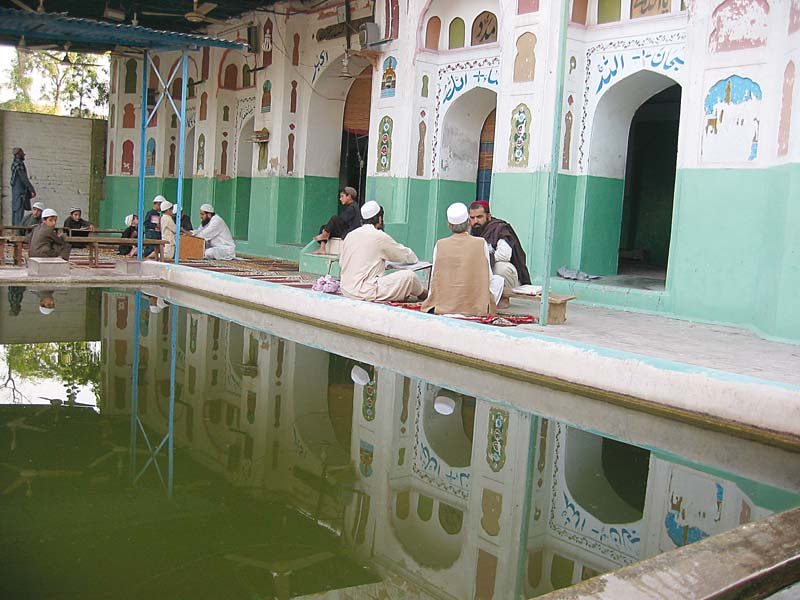
From the ‘grave of the monkey’ to an abandoned mosque, Durrani graveyard is just as mysterious as it is historic.
Inside what is considered one of the city’s archaeological attractions, there are two (possibly ancient) mosques and one of them is in relatively good shape. However, the smaller one lies abandoned with two small graves in the centre of its courtyard. This is another anomaly as graves are usually found in the corners of mosques.

Grave of one of the members of the royal family. PHOTOS: RIAZ AHMAD/EXPRESS
Dr Ahmad Hassan Dani, the famous historian, writes in his book Peshawar—Historic City of the Frontier:
There are two brick built mosques within the enclosure. The mosque near Sheikh Habib’s grave was built by Hafiz Murad in AD 1725. It is an oblong building with octagonal corner towers. It consists of a three-domed prayer hall with a vaulted verandah on the east. Another mosque was in 1796 by Shaikh ‘Iwaz, a saint of some renown during the Durrani period. It is a small brick built mosque with a low flat roof, the interior walls of which are plastered and further painted. They also bear several inscriptions. In the court, there lie two graves.
Ashes and dust
Sarhad Conservation Network head Dr Ali Jan finds the graves in the smaller mosque fascinating, but says nobody can be certain whose remains they contain. “They have old Persian calligraphy; the kind found on ancient Afghan tombs and mosques,” he says. “They seem to be Sufi-inspired geometric shapes.”

Tomb of Sardar Mohammad Ayub Khan, victor of famous Mewand battle. PHOTOS: RIAZ AHMAD/EXPRESS
“Unfortunately, the inscriptions have been heartlessly whitewashed and only faint traces remain,” he says.
“This graveyard needs to be preserved for the coming generations.”
Domes undone
There is a historic gateway which serves as the entrance to the graveyard.
The graves of Sheikh Habib, an Arab by origin, Sardar Muhammad Ayub Khan, the victor of the famous Mewand battle, Sardar Muhammad Ibrahim Khan, Sardar Jalaldudin Khan and Sardar Muhammad Ayub Khan’s mother lie in the small enclosure.
Dani mentioned a domed gateway in his book. However, the dome is now gone. Similarly, he had documented three domes in the mosque, but now only two remain. The fate of the third remains a mystery. Some believe the desire of Afghan prayer leaders to build a modern mosque caused them to remove it—after all, they replaced the historic boundary wall with a new one.
Folklore
The graveyard is home to the centuries-old bejo ki qabar or grave of the monkey. Of course the woman considered to be buried inside the only grave covered by a tomb in the complex is not a primate and probably a person of prominence. However, the sands of time have covered her identity.
Humayan Akhund, a history enthusiast, tells The Express Tribune there is no evidence or documentation on bejo ki qabar at Durrani graveyard other than a few inscriptions in Hindko.

Entrance to the smaller mosque where the graves are located. PHOTOS: RIAZ AHMAD/EXPRESS
“Legend says she was the concubine of Shah Shuja, the Durrani king of Afghanistan. Peshawar was his winter capital,” he says. “When she died— some say poisoned by one of the king’s wives— the ruler built this simple yet beautiful tomb over her gravesite,” he said.
However, history has forgotten about the mysterious woman and now only hearsay remains.
Published in The Express Tribune, June 17th, 2015.




























1713853507-0/MalalaHilary-(2)1713853507-0-270x192.webp)








COMMENTS
Comments are moderated and generally will be posted if they are on-topic and not abusive.
For more information, please see our Comments FAQ